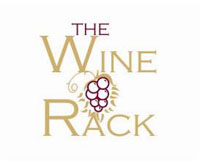It is said there are two types of wine drinkers in South Africa and even other parts of the world: those who love Pinotage and those who hate it and, while there are a handful of Pinotages from Zimbabwe, the US and New Zealand, you should explore the real McCoy before you cast your own vote, writes Cathy van Zyl, Master of Wine, from South Africa..
 |
Advertisement |
Pinotage was crossed in 1925 by Professor Perold (Elsenburg Agricultural College) from Pinot Noir and Cinsaut, or Hermitage as it was then known. The professor left no notes about his experiment so it is assumed he wanted to combine the best its parents had to offer. By this stage, Cinsaut was already one of the ‘work-horse’ grapes in the Cape winelands and a productive bearer; it would provide the vim and vigour. The Pinot Noir, plantings of which had proven more susceptible to disease there, would contribute colour, complexity and ‘nobility’.
The first commercial plantings, at Myrtle Grove farm in the Helderberg bowl, ripened early, high sugar levels were achieved easily, the vines stayed healthy and vigorous, and their wines showed a deeper, more intense colour than either parent did.
Pinotage is born commercially
In 1959, a red wine from Pinotage grown on Bellevue was crowned champion at the Cape Wine Show. Two years later, the name ‘Pinotage’ was used on a label for the first time when Stellenbosch Farmer's Winery (now Distell) marketed the 1959 champion under the Lanzerac brand. This success inspired more and more farmers to plant the new variety so that today it is the 4th most planted red grape in the Cape winelands (6% of total plantings) behind Cabernet Sauvignon (12%), Shiraz (8%) and Merlot (6.5%), and ahead of Cinsaut (2%).
Pinotage on the Palate
When it comes to taste and smell, Pinotage is distinctive. On the nose, its fruit profile tends towards mulberry, strawberries and damson; there’s usually a little lift of acetone or varnish; and occasionally campfire smokiness. Its palate is full flavoured with the same fruits; its tannins can be aggressive if not well managed; and sometimes there’s an emphatic bitter edge to its finish.
No matter what its detractors say, it can make high quality wine, one example being ‘Diesel’ from Beyerskloof, and made by the ‘King of Pinotage’, Beyers Truter. It achieved the highest rating of 5 stars in the 2010 edition of the country’s Platter’s South African Wines. All agree, however, that low-yielding old bush vines produce the best grapes, and that the grape needs careful handling in the cellar to avoid the volatile esters and bitter finish that can detract from its charm.
On the shelf, there’s a wide range styles from party-starting unoaked tipples to crafted-for-lengthy-cellaring masterpieces. An unoaked version showing more Cinsaut parentage with vibrant strawberry fruit is the standard version from Simonsig while Beyerskloof includes a lightly oaked version in its line-up of four Pinotages. Producers of dark and full-bodied wines include Beaumont, L’Avenir and Lammershoek. Grangehurst and Neil Ellis are two of the wineries seeking the more delicate characteristics of its Burgundian lineage. Arguably among the best regardless of style are those from Graham Beck (‘The Old Road Pinotage’), Kanonkop, Simonsig (‘Red Hill’), Spice Route Winery and Uiterwyk Wine Estate(‘Top of the Hill’).
The Blending Partner
Some argue that the real role of Pinotage should be as a blend component; indeed, wines wishing to call themselves ‘Cape Blend’ are supposed to contain a percentage of the grape. Examples here are Clos Malverne (‘The Auret’) and Warwick (‘Three Cape Ladies’). But, there’s a new style finding favour locally and in Singapore, the UK, USA and Canada. It’s dubbed ‘coffee Pinotage’ and it was made by Bertus Fourie at Diemersfontein Wine & Country Estate in 2001.
Fourie – ‘Starbucks’ as he is nicknamed – combined a specific yeast with a certain type of oak and toasting to give the Pinotage rich coffee overtones on the nose and chocolate notes on the palate. The result is not to everyone’s taste, but has done much to demystify wine and make it more accessible.
Seek out the Diemersfontein version or Fourie’s own label, Barrista, and learn more about Pinotage from The Pinotage Club and its blog, both founded by Peter F May to celebrate wines made from the grape.
Cathy van Zyl
 Cathy Van Zyl is the only resident Master of Wine in South Africa. She is the Associate Editor and taster for the coveted Platter's Guide for South African Wines. She is a judge and panellist for several competitions in South Africa and abroad. She contributes to international magazine and websites, including delWine, and lectures for the Cape Wine Academy on tasting. Cathy Van Zyl is the only resident Master of Wine in South Africa. She is the Associate Editor and taster for the coveted Platter's Guide for South African Wines. She is a judge and panellist for several competitions in South Africa and abroad. She contributes to international magazine and websites, including delWine, and lectures for the Cape Wine Academy on tasting.
For a Review http://www.indianwineacademy.com/item_5_310.aspx by Subhash Arora visit,
|